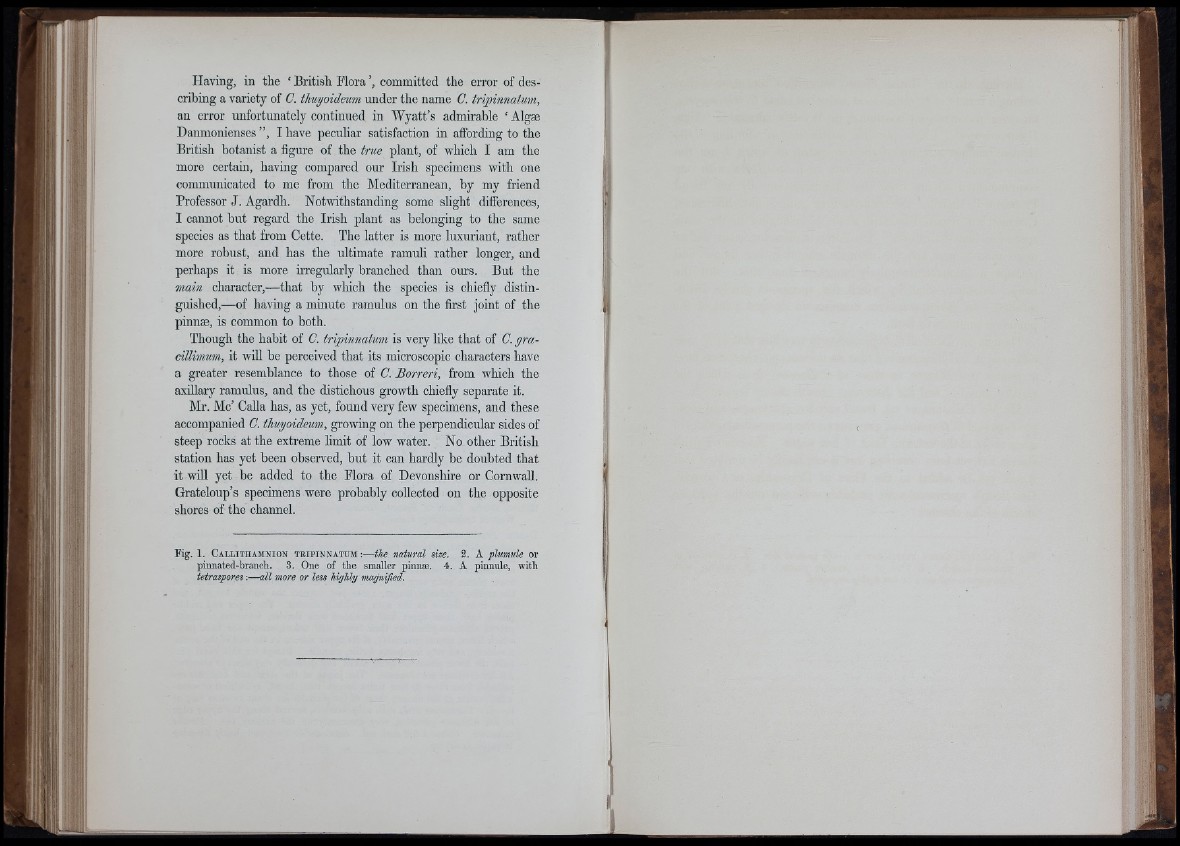
Having, in the ‘ British Flora ’, committed the error of describing
a variety of C. thuyoideum under the name C. tripinnatum,
an error unfortunately continued in Wyatt’s admirable ‘ Algæ
Danmonienses ”, I have peculiar satisfaction in affording to the
British botanist a figm-e of the true plant, of which I am the
more certain, having compared our Irish specimens with one
communicated to me from the Mediterranean, by my friend
Professor J. Agardh. Notwithstanding some slight differences,
I cannot but regard the Irish plant as belonging to the same
species as that from Cette. The latter is more luxuriant, rather
more robust, and has the ultimate ramuli rather longer, and
perhaps it is more irregularly branched than ours. But the
main character,—that by which the species is chiefly distinguished,'—
of having a minute ramulus on the first joint of the
pinnæ, is common to both.
Though the habit of C. tripinnatum is very like that of C. gracillimum,
it will be perceived that its microscopic characters have
a greater resemblance to those of C. Borreri, from which the
axillary ramulus, and the distichous growth chiefly separate it.
Mr. Me’ Calk has, as yet, found very few specimens, and these
accompanied C. thuyoideum, growing on the perpendicular sides of
steep rocks at the extreme limit of low water. No other British
station has yet been observed, but it can hardly be doubted that
it will yet be added to the Flora of Devonshire or Cornwall.
Grateloup’s specimens were probably collected on the opposite
shores of the channel.
Fig. 1. Ca l l it h a m n io n t m p in n a t u m :— the natural size. 2. A plumule or
piunated-branch. 3. One of tbe smaller pinnæ. 4. A pinnule, witb
tetraspores :— all more or less highly magmjied.